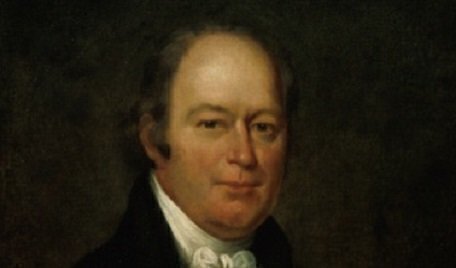On December 27, 1771, future Supreme Court Justice William Johnson, Jr., was born in South Carolina. Johnson has attracted a following among Court watchers over the years for his little-understood role as the first prominent dissenter in Supreme Court history.

Today, dissenting opinions from the justices in high-profile cases get considerable attention. The late Justice Antonin Scalia, for example, was noted for his pointed dissents that usually included a few choice words and phrases, such as “argle-bargle” and “jiggery-pokery.” Dissents also serve an important purpose because they may include logic and language about the Constitution that might have future relevance and can influence the development of the law over time.
Some of the great dissents in Supreme Court history have set the tone for ground-breaking decisions. For example, Justice John Marshall Harlan famously wrote in his dissent in Plessy v. Ferguson, the 1896 decision that upheld segregation, that the Constitution is “color-blind and neither knows nor tolerates classes among citizens. In respect of civil rights, all citizens are equal before the law.” Plessy was later overturned by Brown v. Board of Education (1954).
Justice Louis Brandeis’ dissent in Olmstead v. United States (1928) articulated a constitutional right to privacy. Justice Robert Jackson eloquently objected to Korematsu, the 1944 decision that upheld the internment of Japanese-Americans.
Current Supreme Court Justice Ruth Bader Ginsburg, who is known to write a few dissents herself, explained the role of dissenting in the modern court in a 2009 speech to the Harvard Club in Washington, D.C.:
“My experience teaches that there is nothing better than an impressive dissent to lead the author of the majority opinion to refine and clarify her initial circulation,” Ginsburg said. Justice Ginsburg pointed to Benjamin Curtis’ dissent in Dred Scott as a prime example. “When a strict interpretation of the Constitution, according to the fixed rules which govern the interpretation of laws, is abandoned, and the theoretical opinions of individuals are allowed to control its meaning, we have no longer a Constitution,” Curtis said about the opinion that upheld slavery, which he bitterly opposed.
In the decades before Dred Scott, and during the time of Chief Justice John Marshall, frequent dissenters were uncommon. Ginsburg noted that part of this was due to “Chief Justice Marshall’s unparalleled ability to achieve consensus among his colleagues. During his tenure, which ran from 1801 until 1835, the Court spoke with one voice most of the time.”
Justice William Johnson became the Court’s first major dissenter, but not at the magnitude of Harlan, Brandeis, and Scalia. The fact that Johnson dissented at all was significant, and it showed his unique position as the first non-Federalist Justice confirmed to the Court.
President Thomas Jefferson, Marshall’s long-time foe, nominated Johnson to the bench in 1804. During his 29 years on the bench, he wrote the third-most opinions of the era, trailing only Marshall and Justice Joseph Story. However, Johnson always didn’t agree with either Marshall or Jefferson. A third of his considerable output of writing was in the form of dissents, comprising about half of all dissents written in the Marshall Court.
Johnson’s most-significant dissent was in Fletcher v. Peck (1810), where the Court set a precedent that it could decide that a state law was unconstitutional, affirming the Constitution’s Contract Clause. Johnson dissented in part with the decision written by Marshall that the state of Georgia couldn’t repeal a land grant to a private party made by a previous state legislature that took bribes.
“It appears to me to bear strong evidence, upon the face of it, of being a mere feigned case,” Johnson argued. “It is our duty to decide on the rights, but not on the speculations of parties. My confidence, however, in the respectable gentlemen who have been engaged for the parties has induced me to abandon my scruples in the belief that they would never consent to impose a mere feigned case upon this Court,” Johnson concluded, referencing three attorneys involved in the case: Luther Martin, John Quincy Adams, and Joseph Story.
Johnson was also a prominent dissenter in Craig v. Missouri, another majority decision from Chief Justice Marshall that upheld part of the Judiciary Act as barring state from issuing loan certificates as de facto paper currency. But in the other major cases of the Marshall Court, Johnson voted along with the majority.
Johnson’s last and most important decisions came during the South Carolina nullification crisis, where he opposed nullification and was forced to leave his home state. He fell ill toward the end of his time on the Court and died in New York City in 1834.







